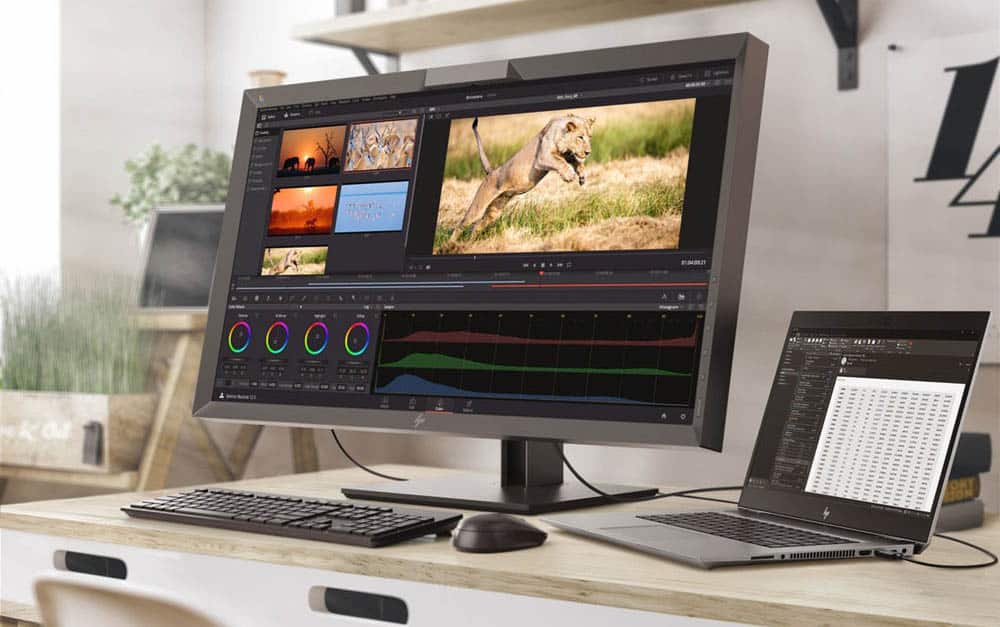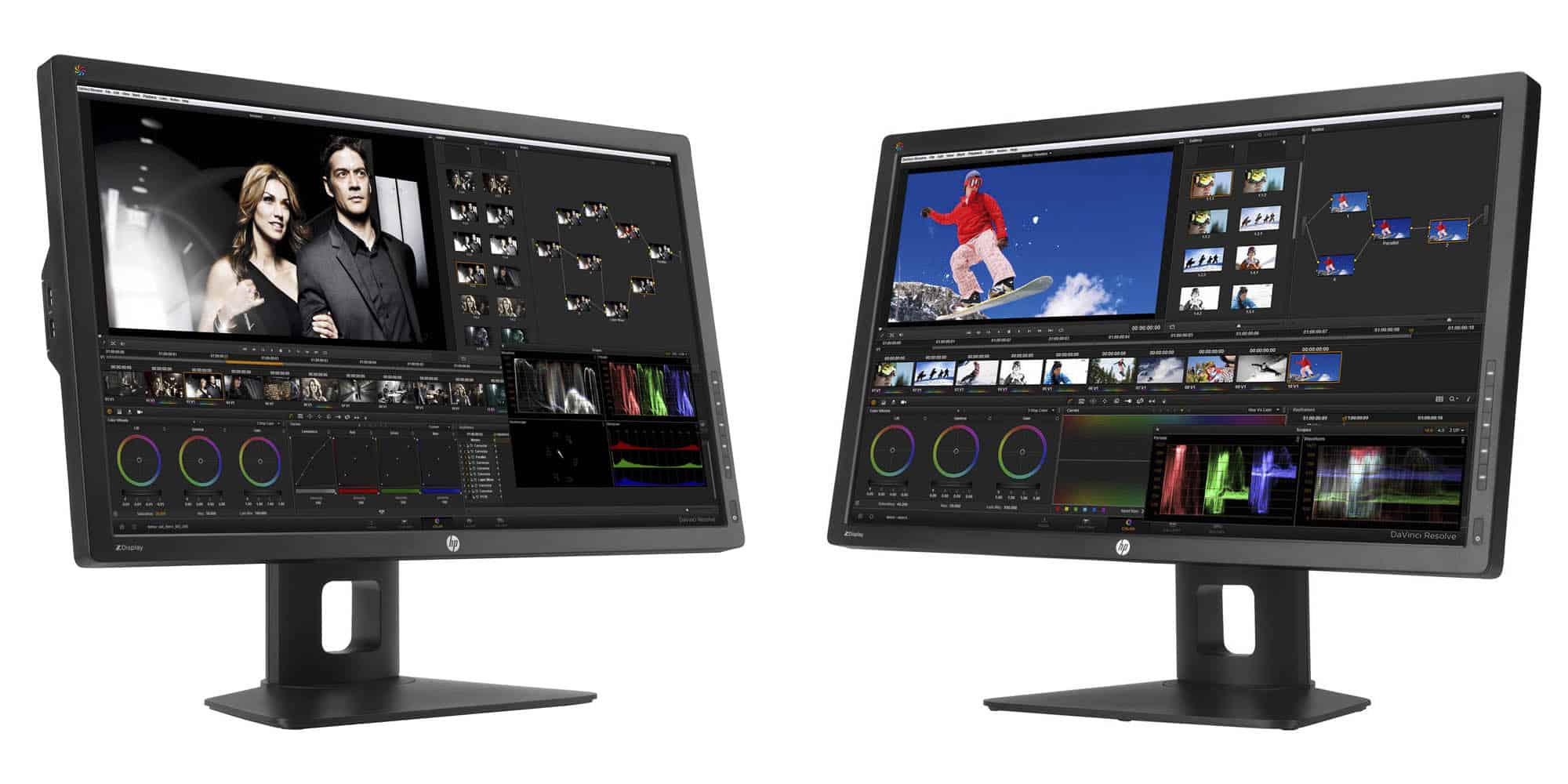Wide-gamut, calibrated and profiled monitors are an incredibly worthwhile investment for professional photographers. For some reason, however, very few photographers seem to purchase one. Instead, most photographers buy cheaper consumer-grade monitors that make photos appear nice on screen, but lack the color accuracy, consistency and depth that will ensure any published photos meet expectations.
The HP Dreamcolor Z27X is designed for those applications where color accuracy is paramount. It has various features that will benefit digital artists, video producers and photographers. Photographers will therefore be very interested in HP’s new Dreamcolor range that boasts over one billion colors with DCI P3 and Adobe RGB coverage.
HP Dreamcolor Z27X Specifications
Out of the box, the 27-inch, 1440p (2560×1440 pixel) monitor looks tidy and unremarkable. It features an HDMI port, an in and out DisplayPort, a total of four USB 3 outputs, an ethernet port and two audio out ports (Digital and Analog). The inclusion of a DisplayPort makes it possible to have the Z27X in a multiple monitor setup. The ethernet port is primarily for remote display management.
The sturdy stand of the Z27X can be rotated horizontally up to 45 degrees in either direction. It can be raised to boost the monitor’s height by up to 12cm, and allows the monitor to be flipped for portrait mode.
The display panel itself is made by LG, like many others. However, this is not your typical LG panel, as its grid polarizer and backlight have been made to a higher specification to ensure color accuracy and also improve the off-axis viewing experience.
As with any other wide-gamut display, the backlight is GB-r-LED. However, HP have modified the backlight by using a custom blue LED to correct over/under saturation in blues—a common problem among other GB-r-LED backlit displays.
Color calibration is built-into the monitor, so you won’t need various profiling tools. You will still, however, need to play with the settings to get the optimal color readings and highlight and shadow rendering.
As with any display, a half hour warm up time is needed before setting up new profiles or doing anything else color critical. I would generally recommend allowing one hour for warm up if setting up new profiles, since some of the readings were off when tested at 30 minutes.
Once the display has been warmed up, the HP Dreamcolor Z27X had consistent color accuracy. There was no problem across the major color, grayscale, and gamma standards.
Converting between various RGB color spaces with RAW photographs did not produce any unexpected results. Deep blues, which are typically a problematic area for wide-gamut monitors did not disappoint with the Z27X. So, it would appear that HP have been successful in their custom modifications to the blue LEDs. The highlights were also very impressive, with perfectly smooth transitions.
The HP Z27X also features a raft of noteworthy video features. It is fully compatible with interlaced and progressive video feeds (which can be either 10-bit RGB or component). Interestingly, it is also capable of receiving a 4K stream, though being a 1440p monitor, will need to be cropped or scaled-down. This is unusual, as most displays do not accept resolutions greater than their native pixel count.
Right now, other professional monitors from the likes of ASUS or ViewSonic fall short in certain areas like missing DCI color support or having built-in color calibration technology. This is where the HP Dreamcolor Z27X really excels – making sure all the various industry standards are covered, and making sure those requirements can be met.
The HP Dreamcolor Range

The Dreamcolor range is not limited to the 27-inch Z27X I tested. There are also 24-inch (Z24X) and 32 inch (Z32X) variants, but buyers should be aware that the differences are not limited to the size of the display. The Z24X is a stripped down version of the Z27X, with reduced color stability and off-axis viewing quality. It also lacks built-in color calibration technology, so professional photographers will do best with the Z27X or Z32X, although these features do come at a hefty premium.
Verdict
Overall, the HP Dreamcolor Z27X is a fantastic display for those doing color sensitive jobs. Although it was initially something created at the request of professional VFX studios, photographers – and especially those who also work with video – also have a lot to gain from having a monitor with such high color accuracy.
Rating: 4.5/5
